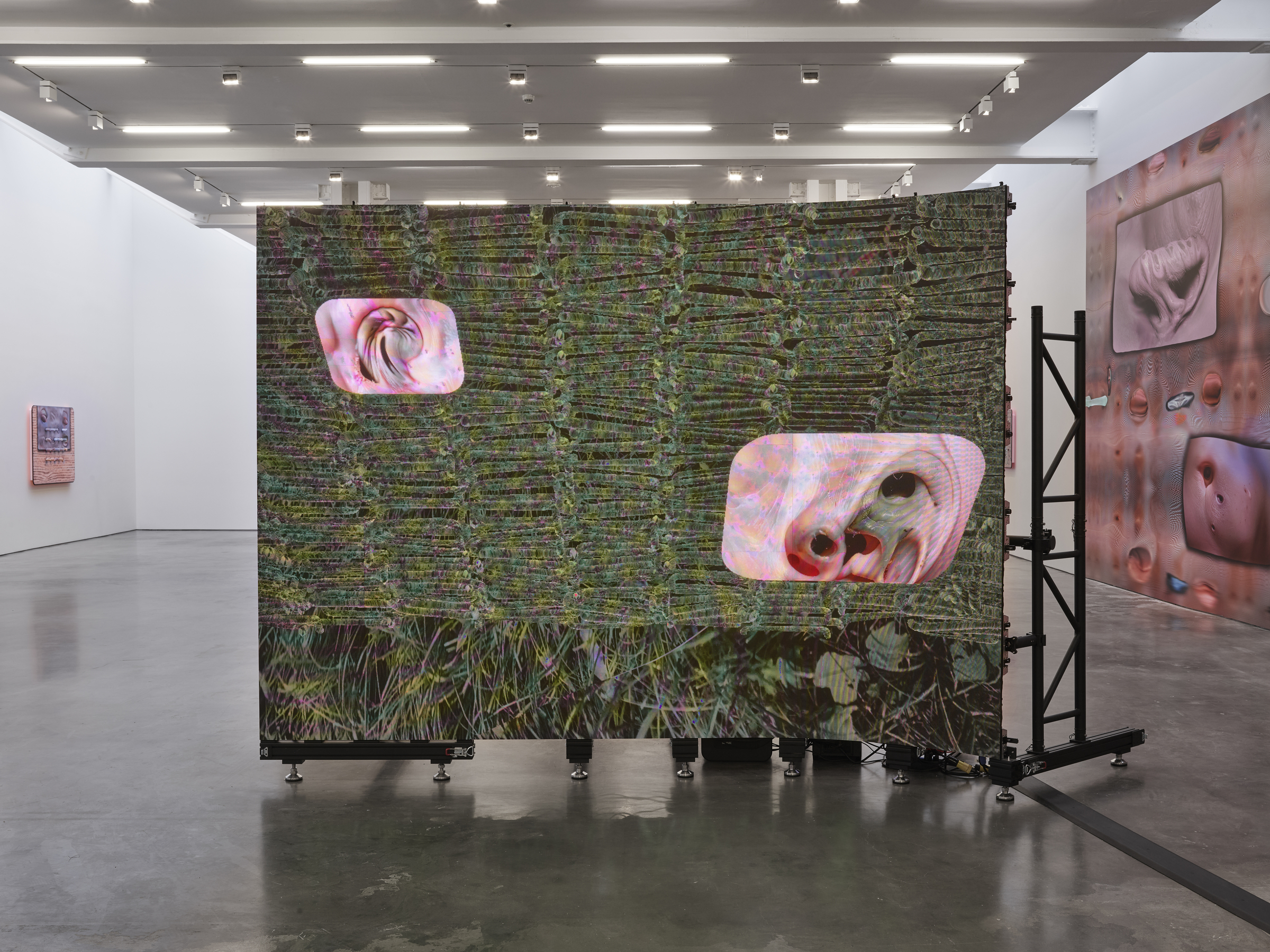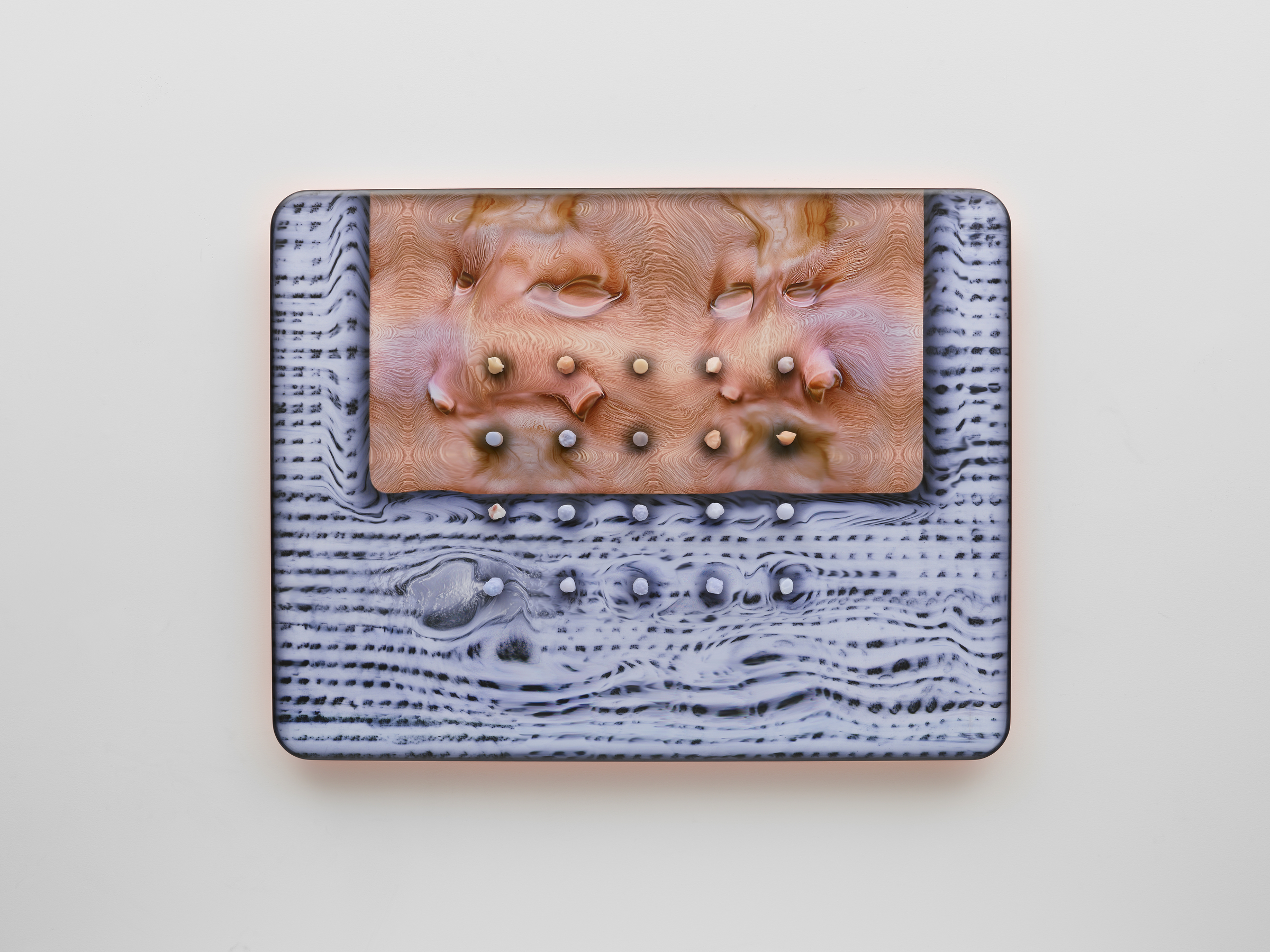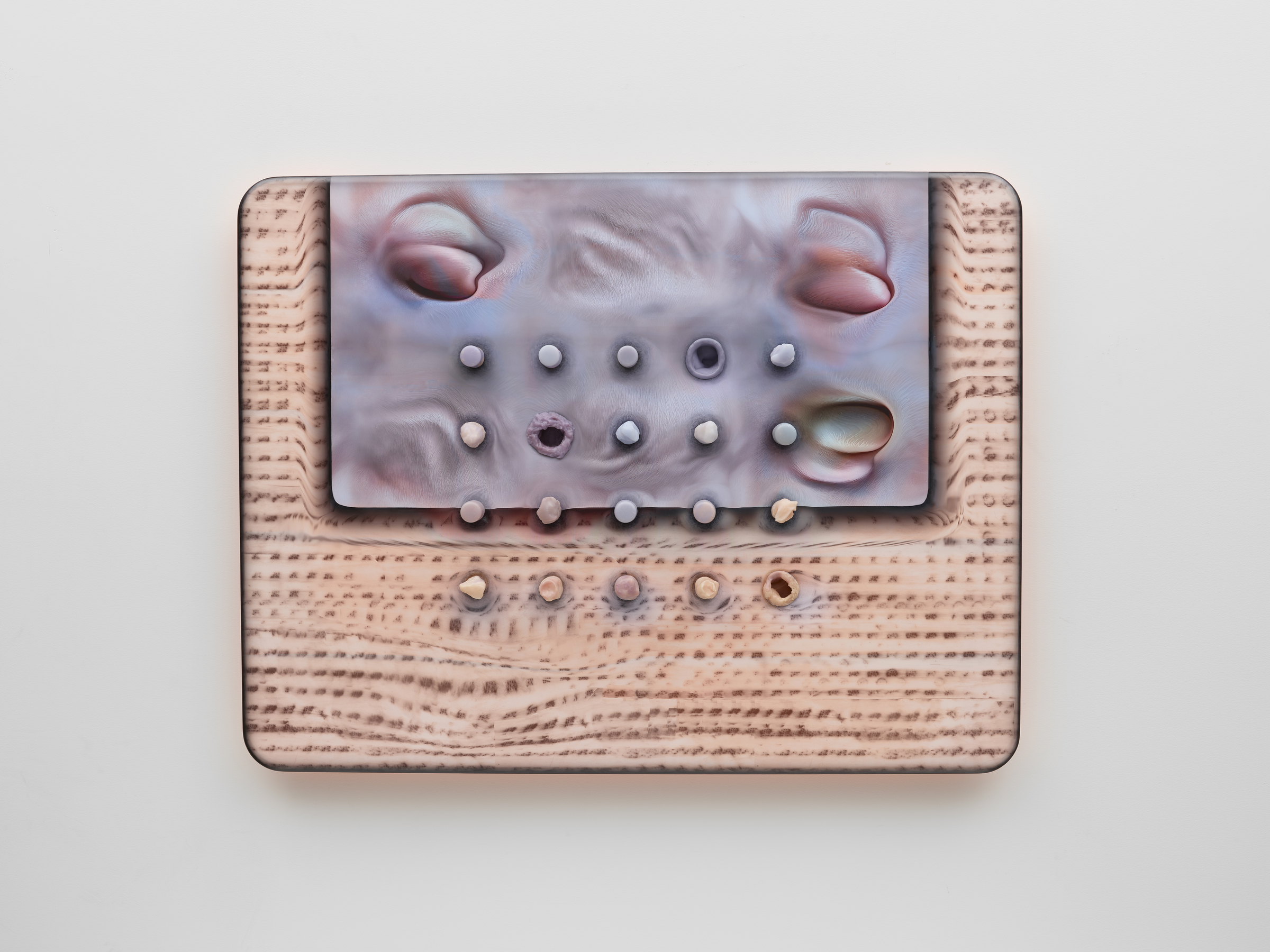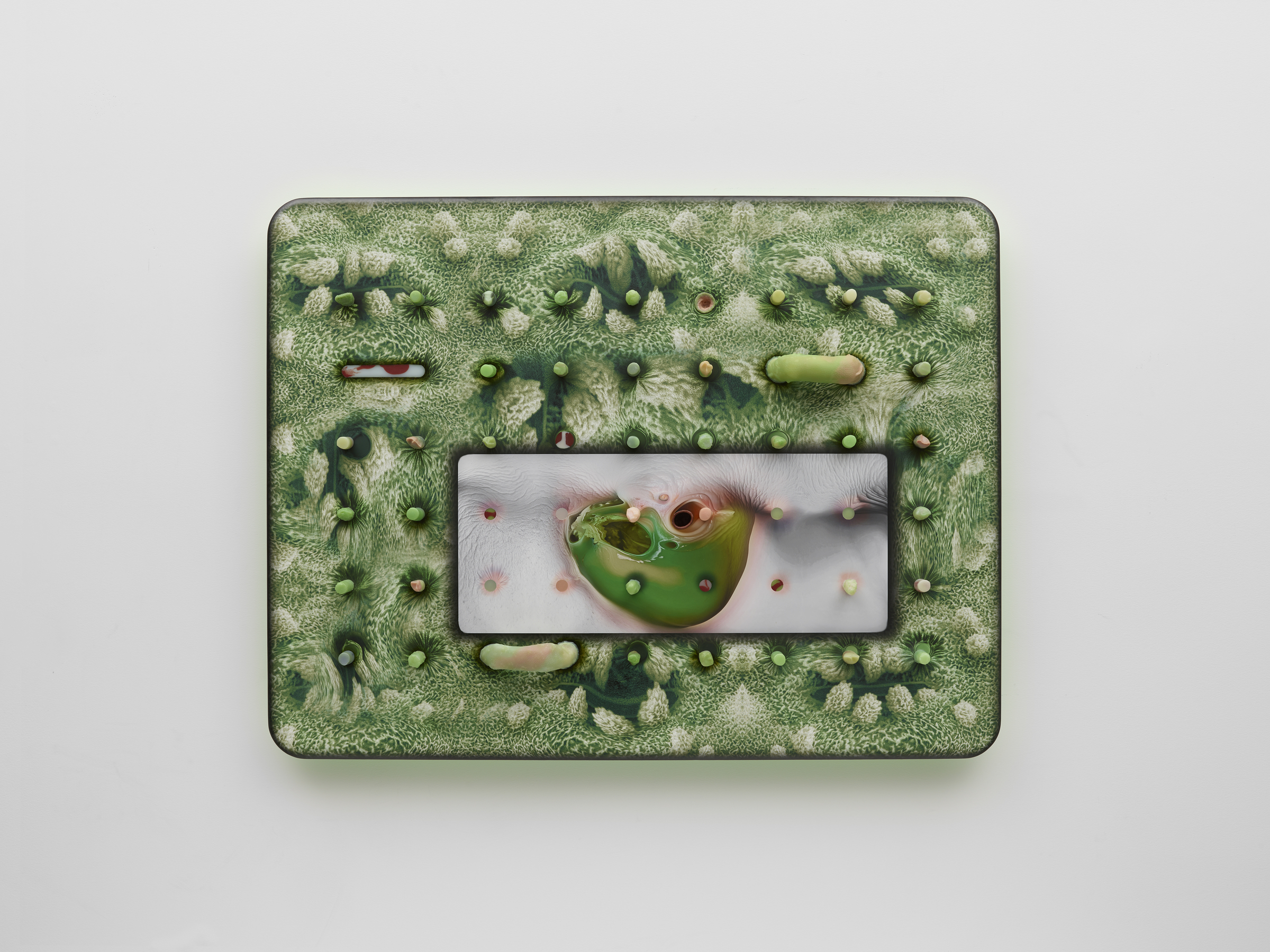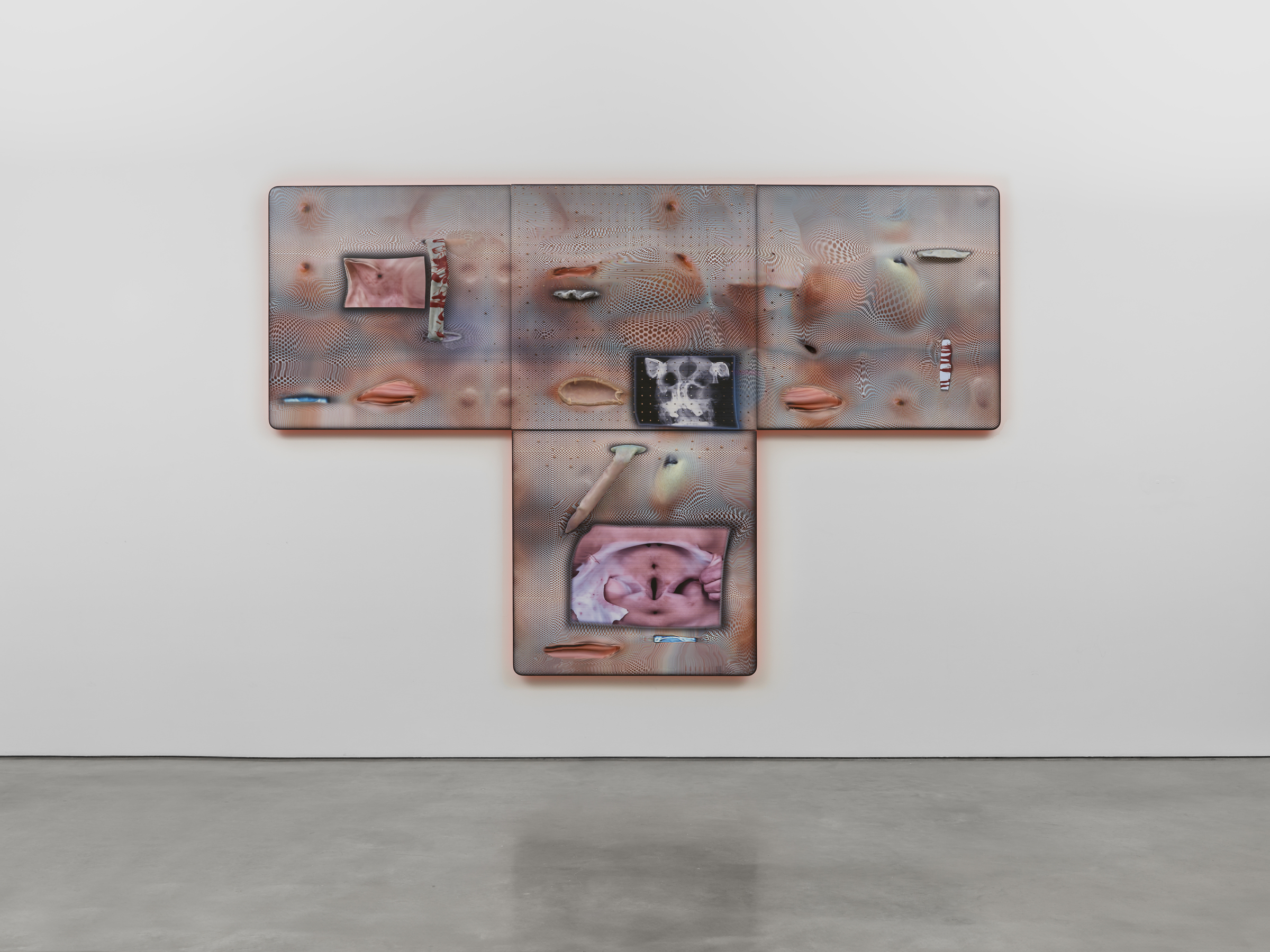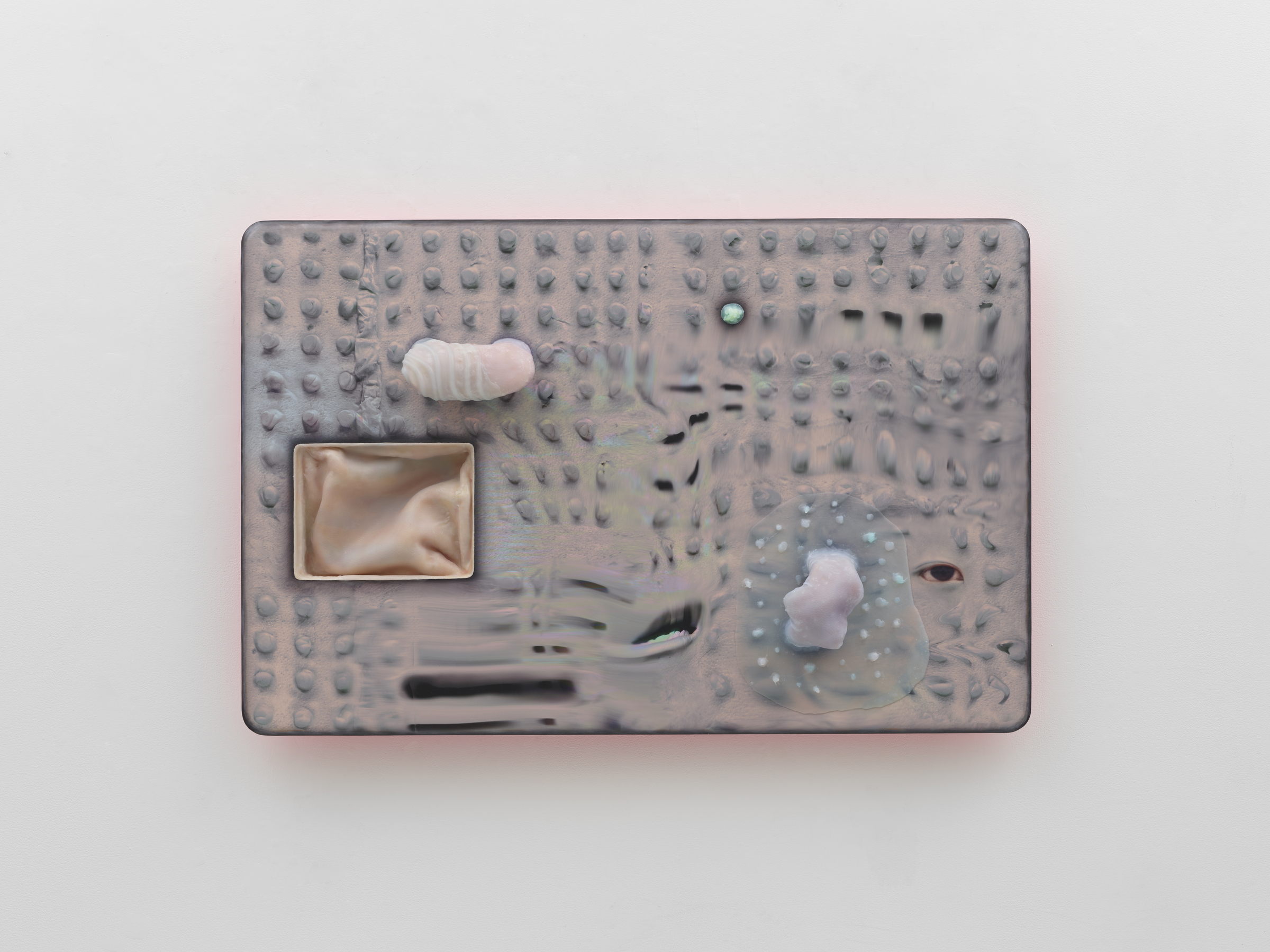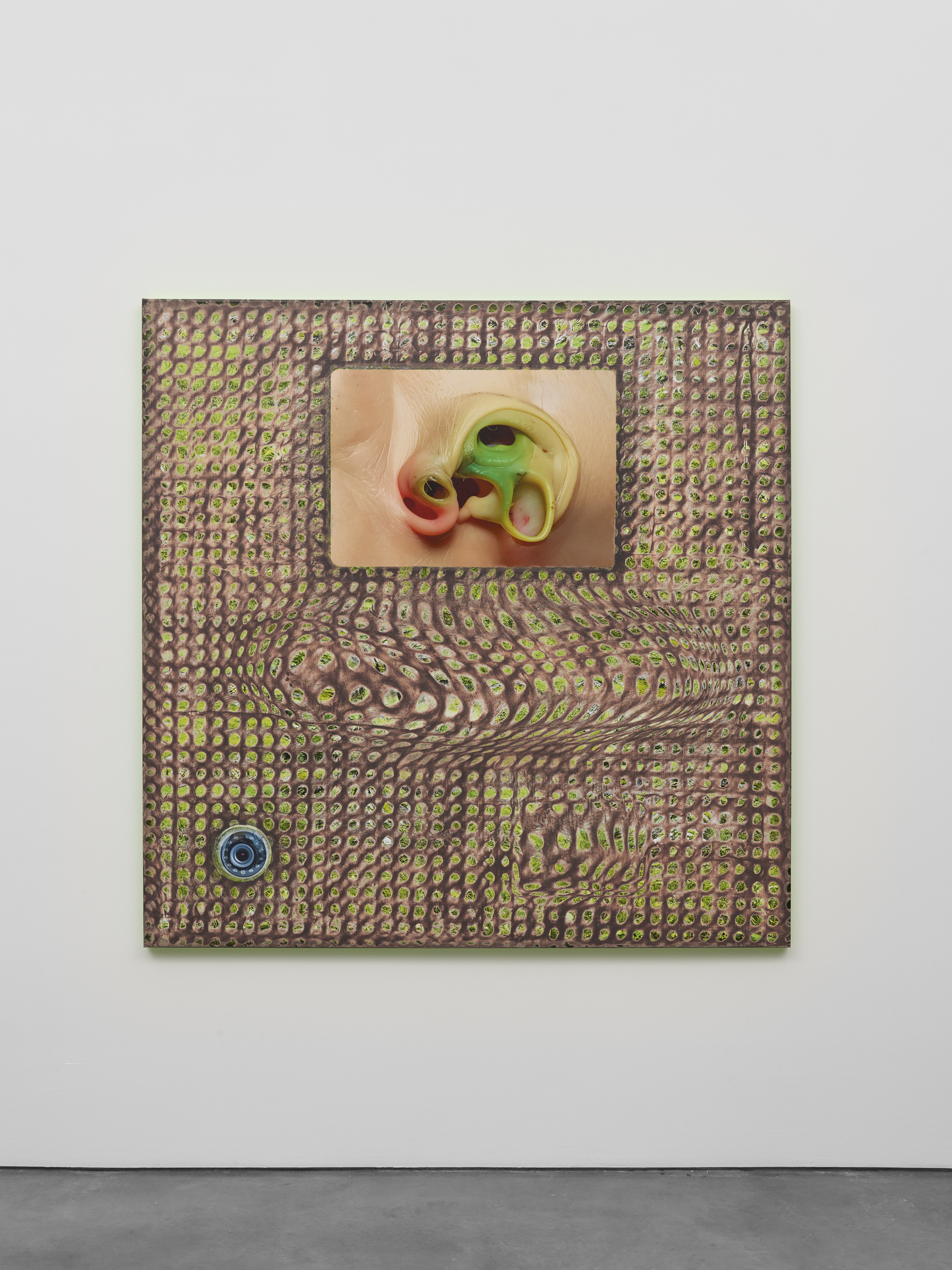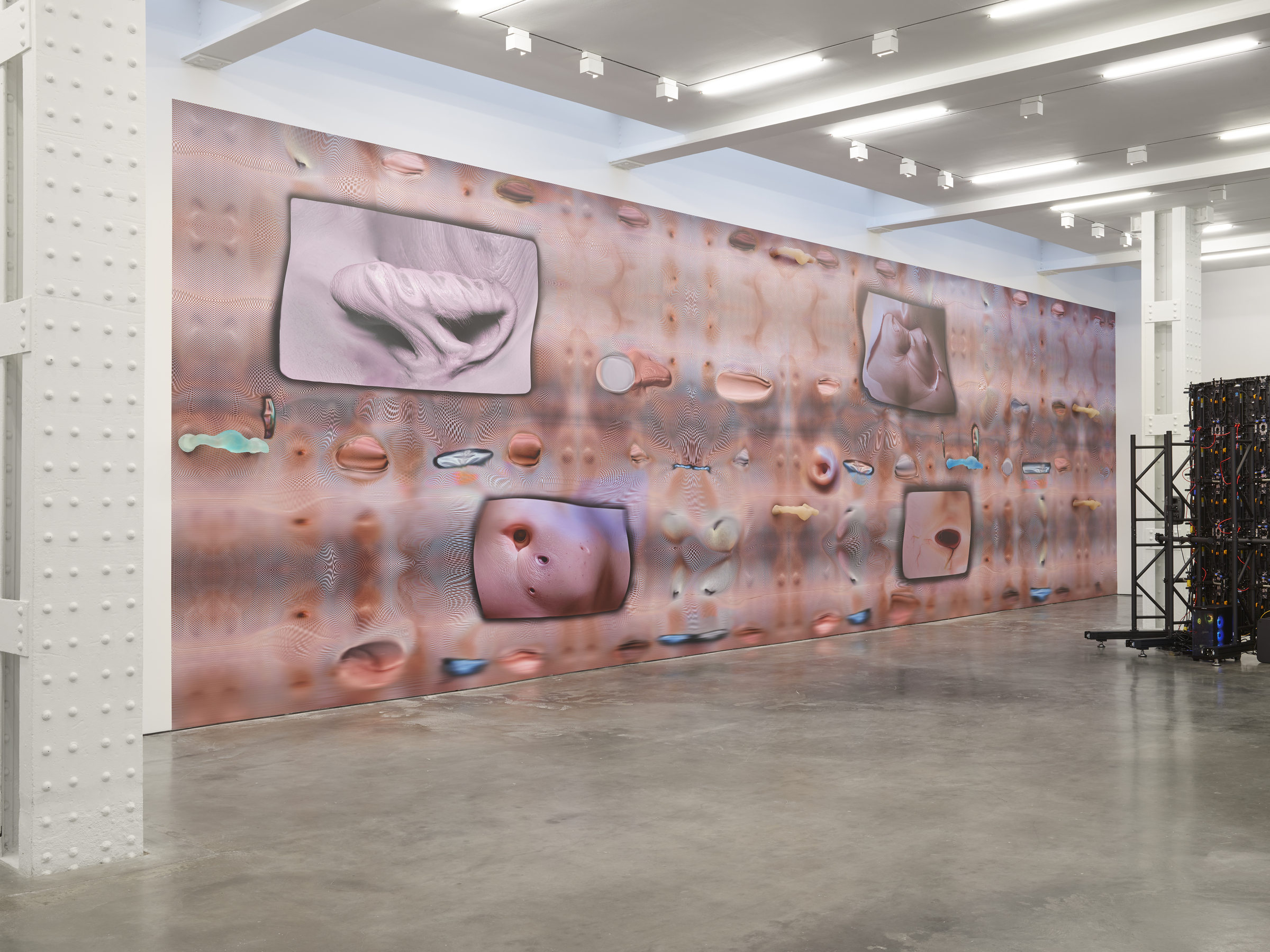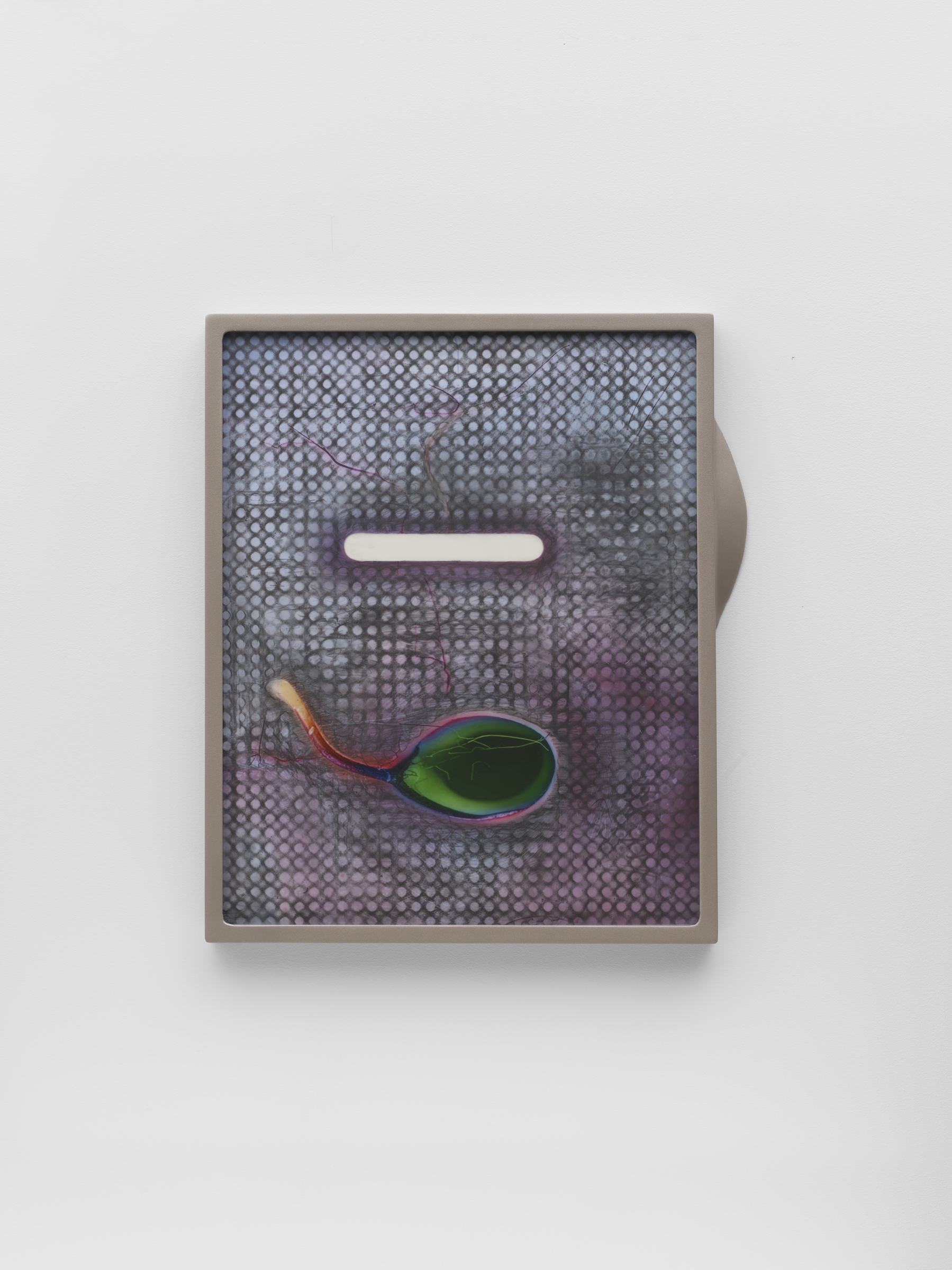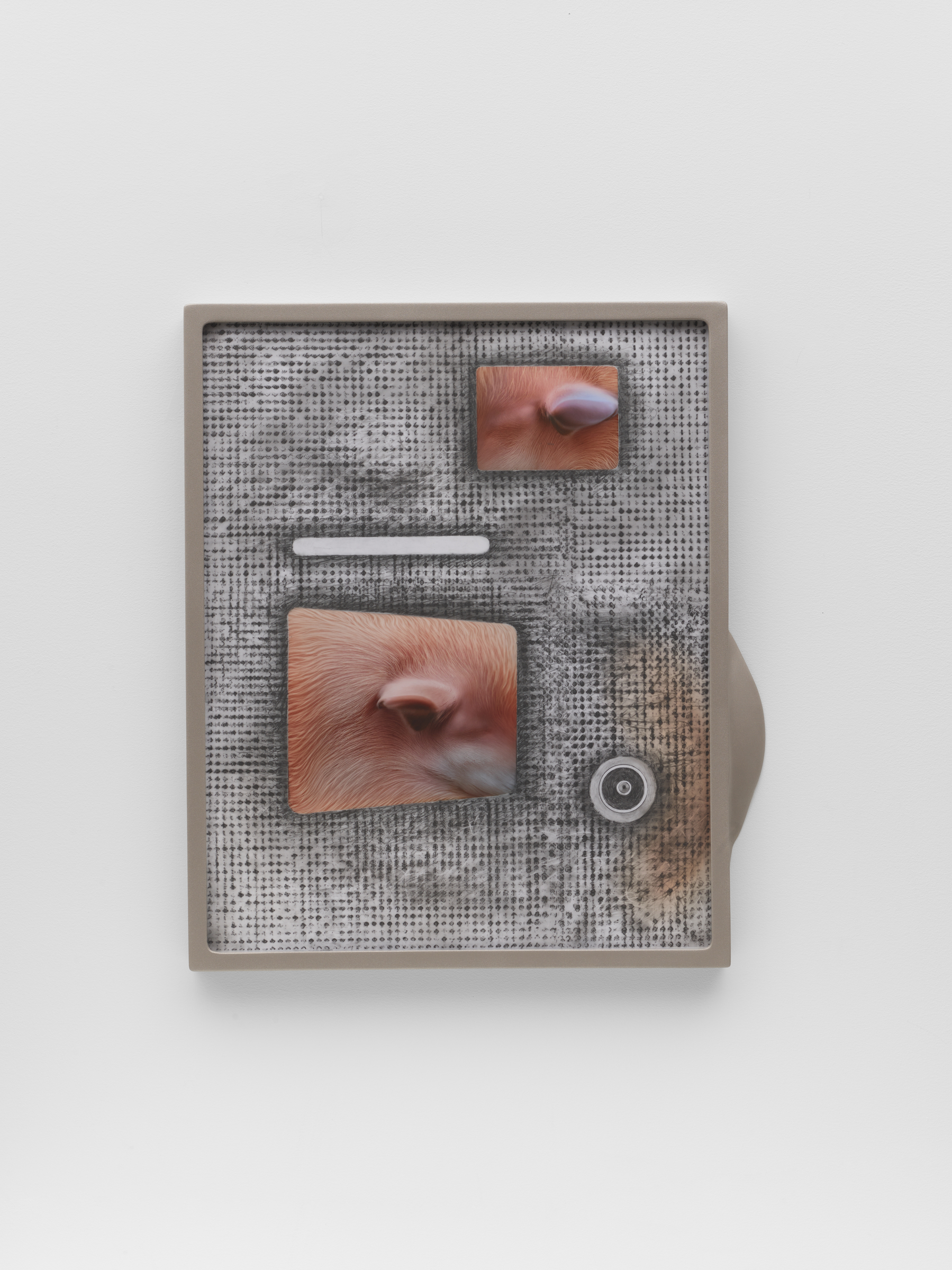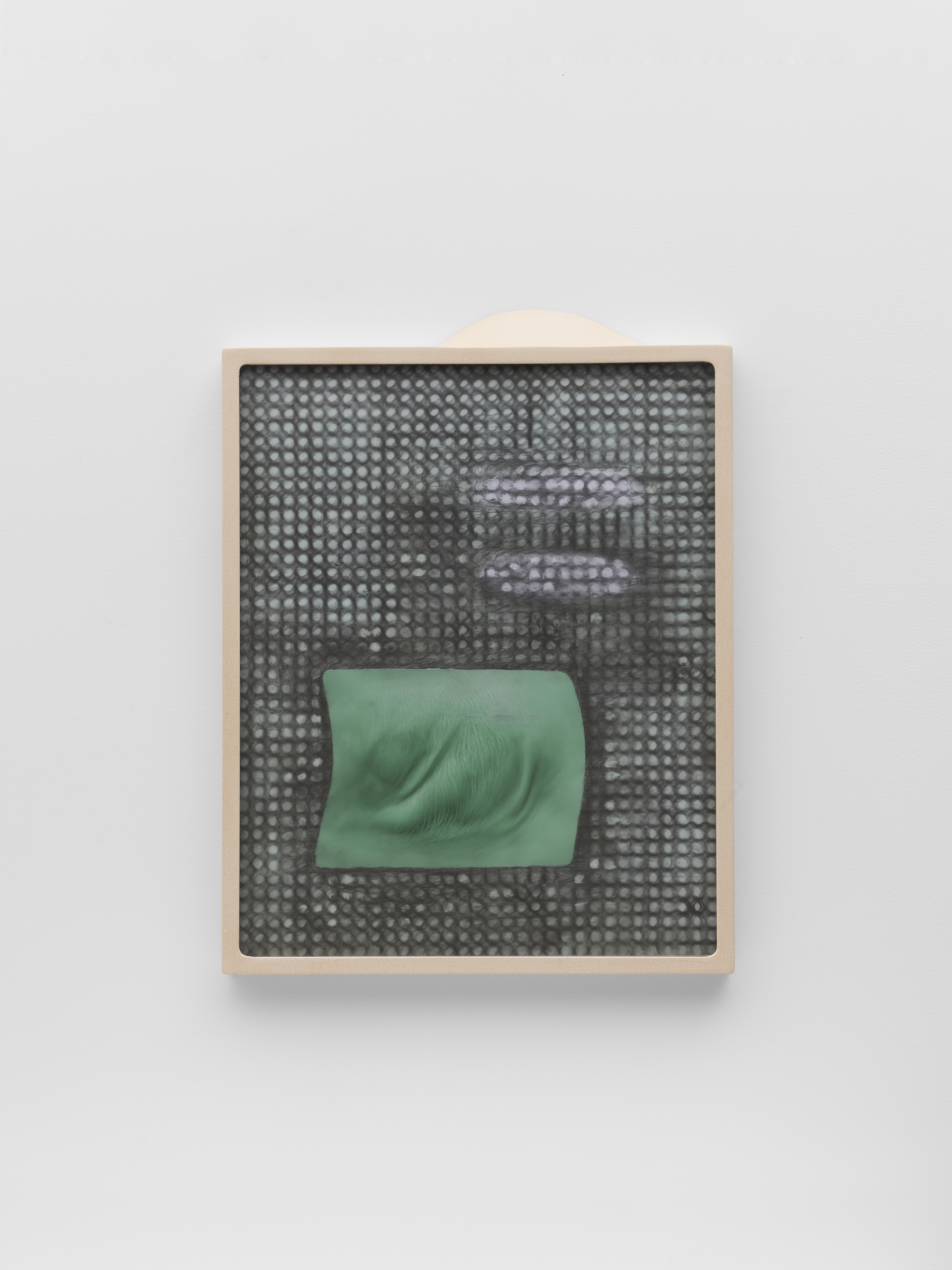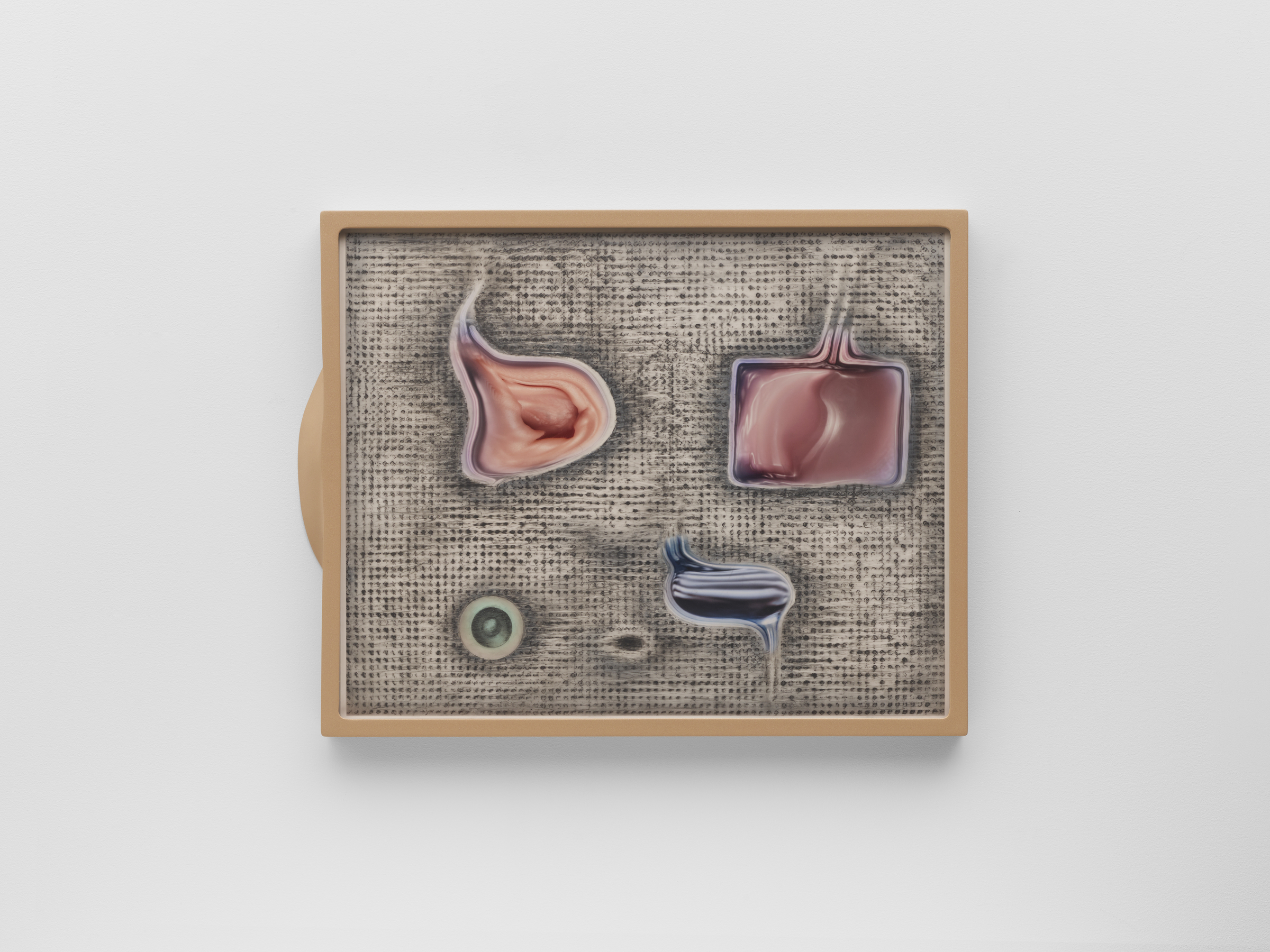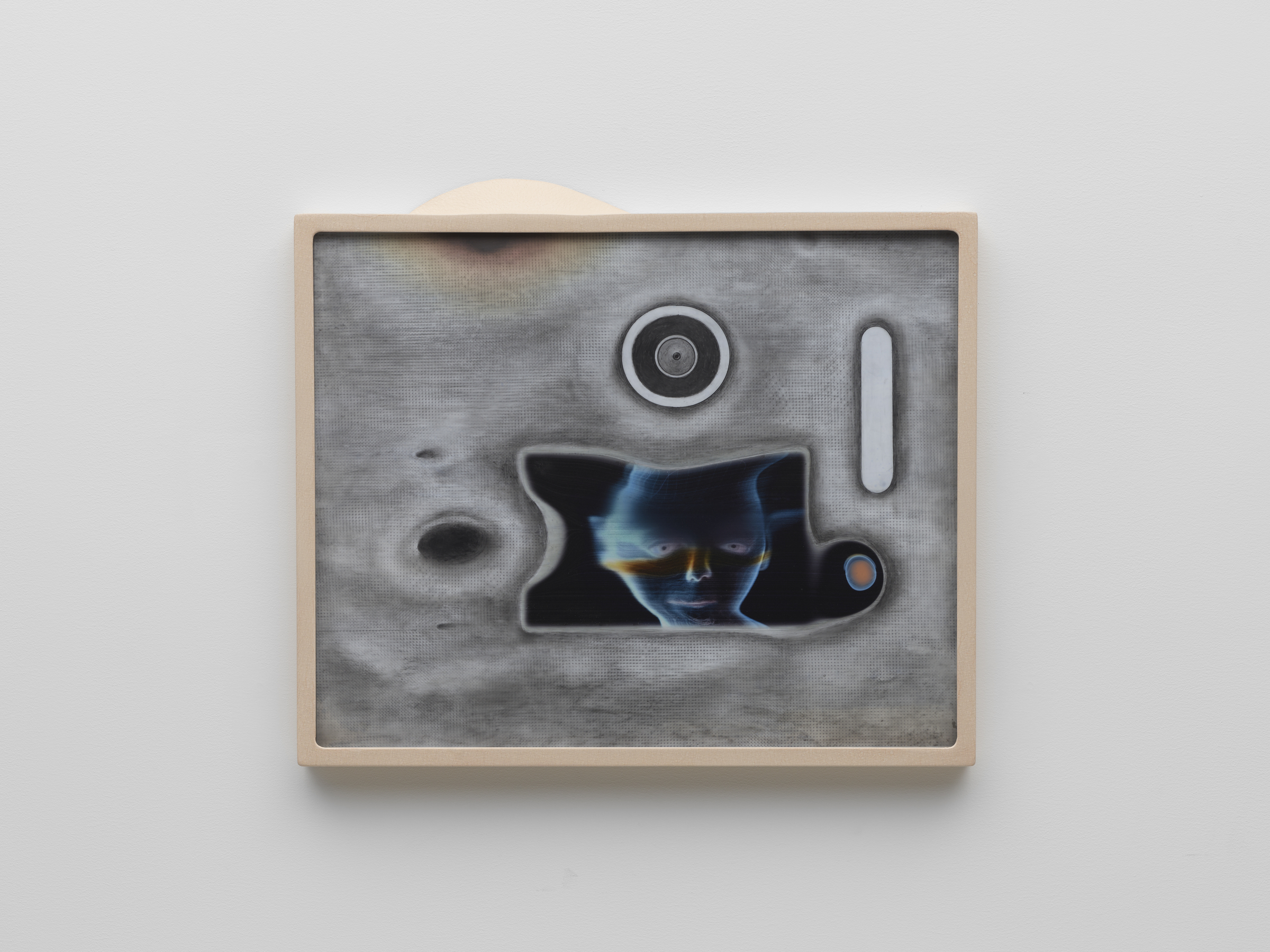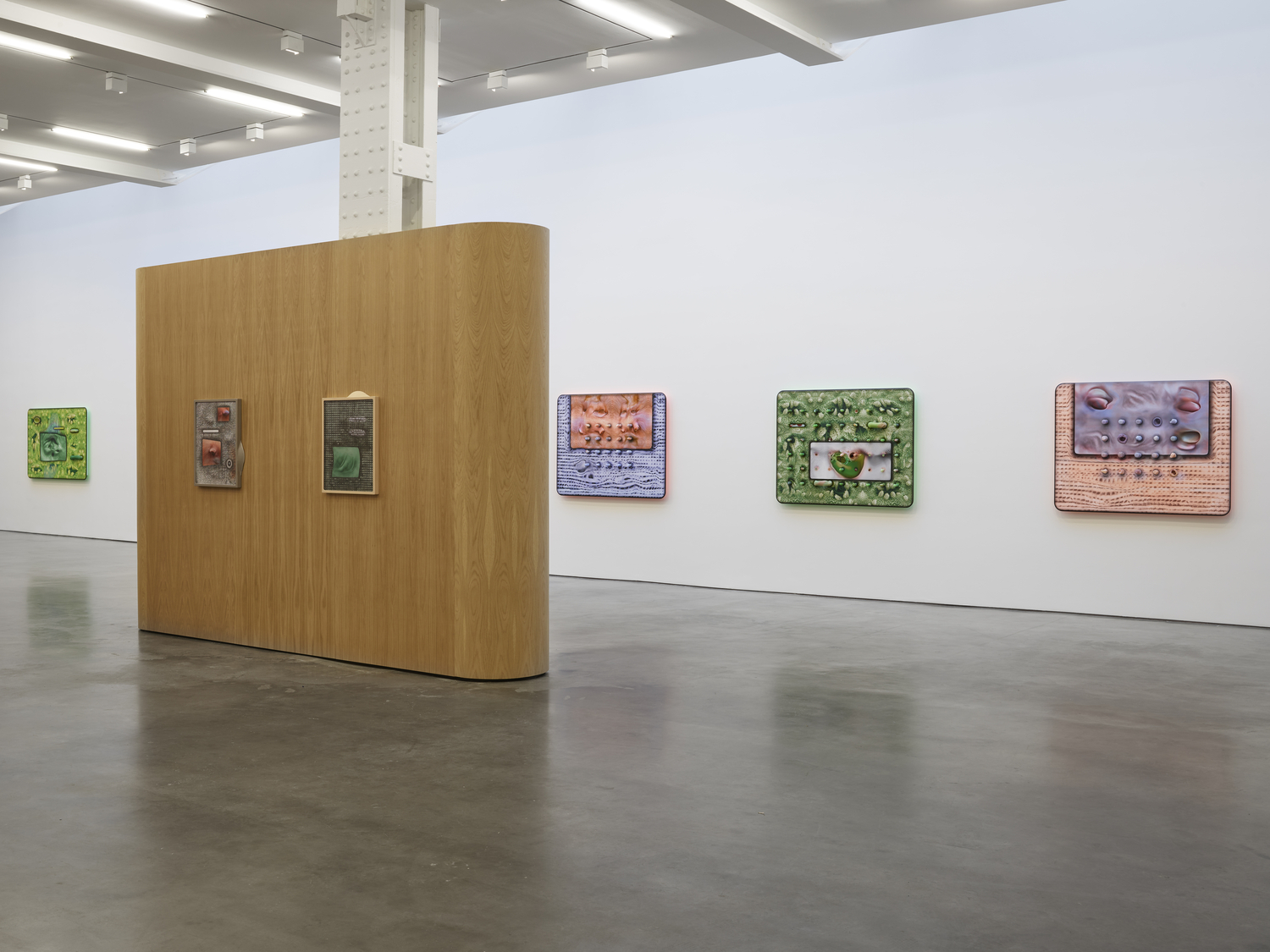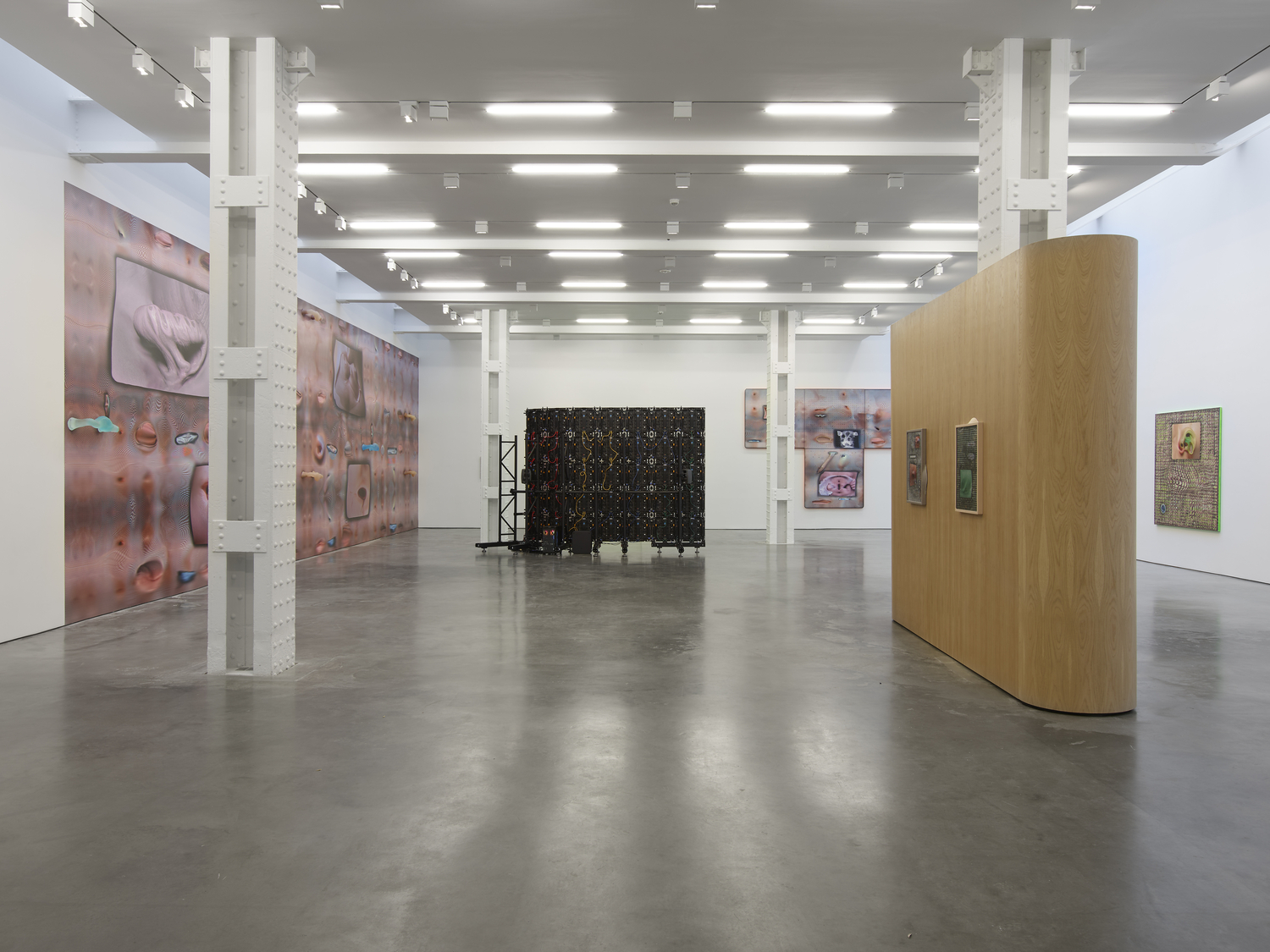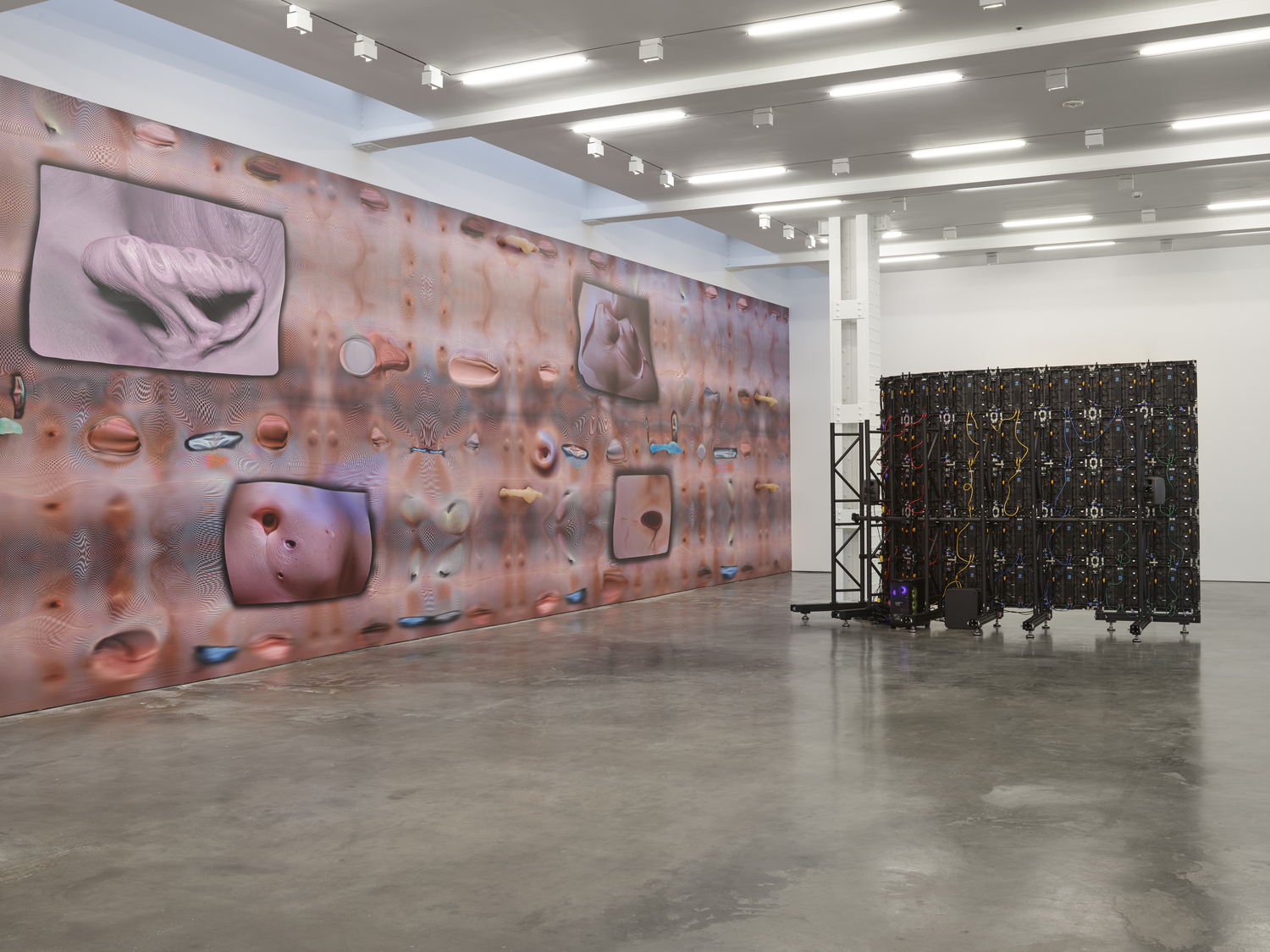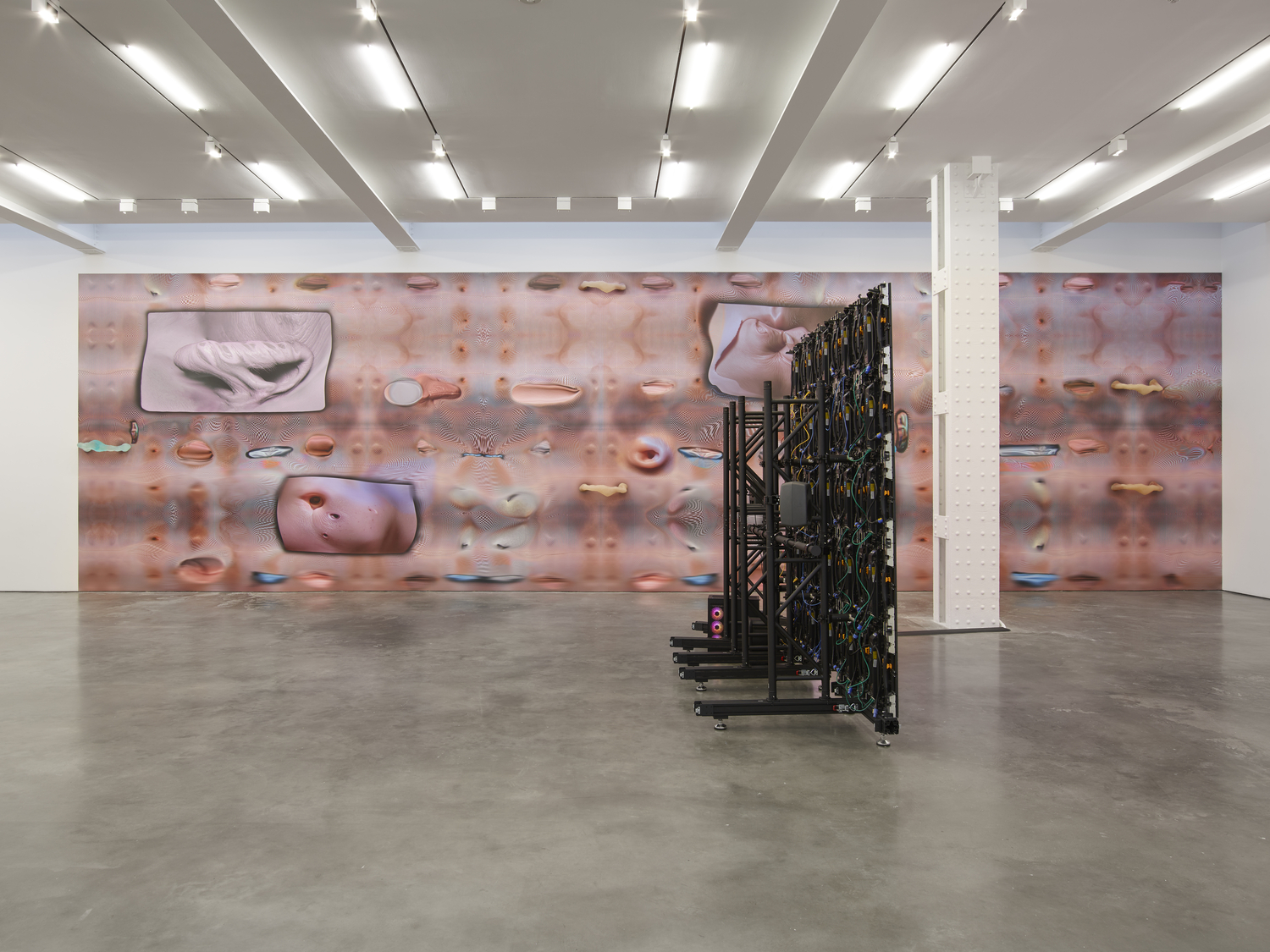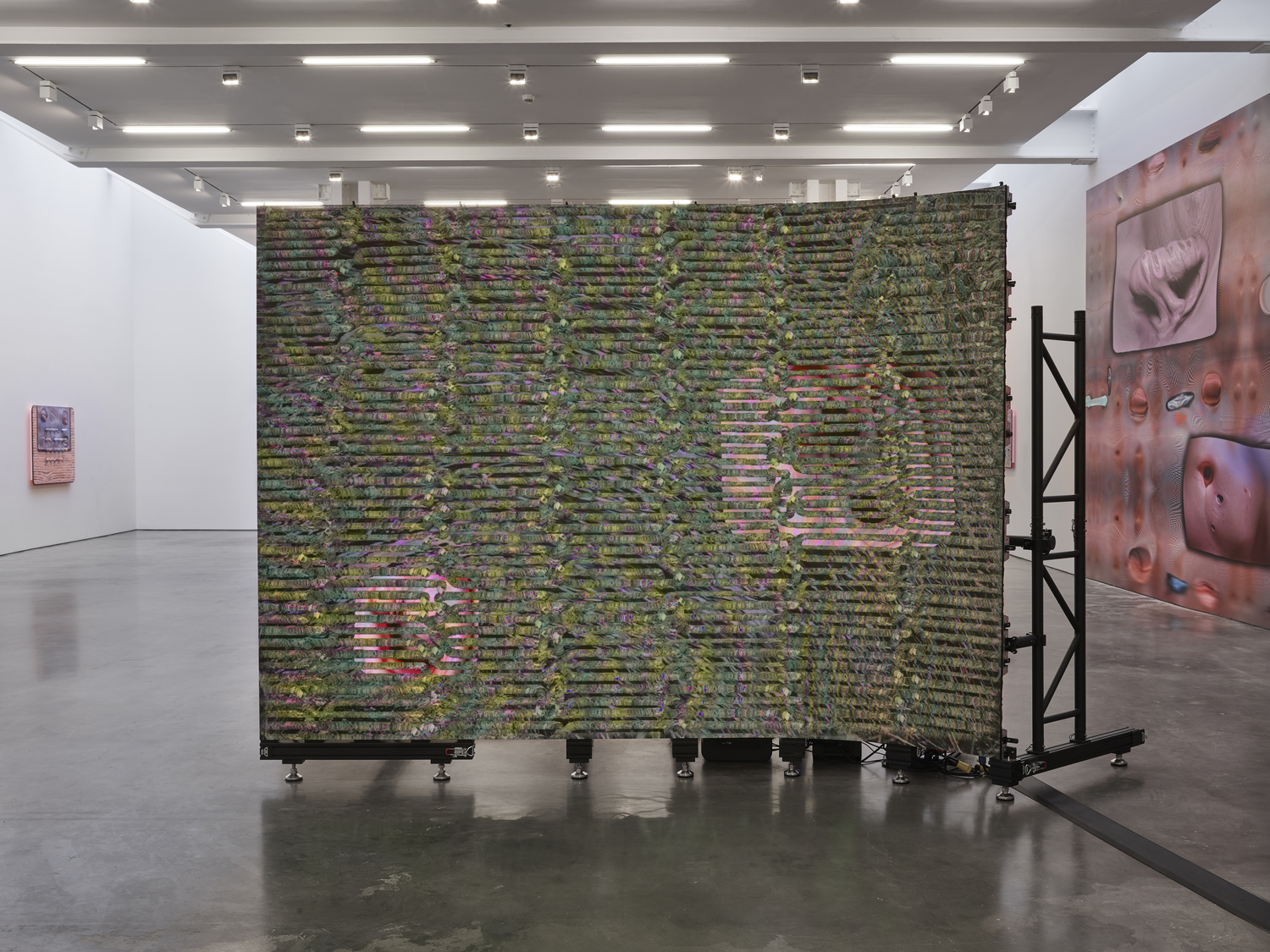Lisson Gallery is pleased to present its first solo exhibition by Tishan Hsu. For over four decades, Hsu has investigated the advancing intersection between the human body and technological systems, developing a singular material language that blends digital imagery, industrial surfaces, and biomorphic forms. His latest show features a range of wall-based pieces, sculptural LED screens, and large-scale visual environments, all of which reflect a heightened engagement with both computational and medical infrastructures.
Hsu’s painting practice seems far from traditional, although his early artistic training reflected many of the high Western canons and skills; ranging from the study of Renaissance glazing techniques to the epic landscapes of the Hudson River School and even the stippling and coloration of French Impressionism. Further studies in architecture, film and photography are also evident in the hybridised paintings made since the mid-1980s. This influence continues in this latest series of combinatory painted reliefs, which blend UV printing, illusionistic paint effects and prosthetic protuberances (silicone additions or cavities).
Aside from his technical prowess and pictorial heritage, Hsu’s abiding interest remains the increasingly blurred frontier between man and machine or, more accurately, between society and the screen. This junction is increasingly tipping toward a wholesale remixing of our beings, our emotions, identities and sensations. Whether accessed through a phone, browser or another interface, the internet has become more than just a repository for information; it now acts as a primary mediator of reality, a surrogate friend and, ultimately, a mirror reflecting our fragmented selves. Hsu conveys this liminal state, our collective and evolutionary transmutation into technological entities, in works like skin-fur-mesh-blue (2025). Retaining key aspects of human physicality, through the use of skin-like effects or hair proxies, these ambiguous, bio-tech surfaces are often punctured or peeled away, as though the artist were unwrapping a layer of epidermis, scrolling through apps on a tablet or leafing past a printed page. Incorporating the simulation of backlighting into some of these panels, Hsu references not only the slick, fetishist design of most personal computing devices nowadays, but also suggests a connection between the neon glow and the environmental conditions and effects of screen usage.
The exhibition’s immersive environment is further extended by Hsu’s new wallpaper installation. AI and other predictive software have informed not only elements of the wallpaper designs but also a continuation of the series of Gray Zone paintings, where a grisaille background or grid is punctuated by machine-generated approximations of body parts – human or animal, it is not clear. Each Gray Zone work is mounted in the artist’s custom-designed, hand-welded, powder-coated steel frame, an integral component that synthesizes the industrial and the organic central to his practice. These frames, with their flesh-like qualities and skin tones, suggest an intimate fusion of screens and organic tissue – the logical extension of the drive toward wearable technology.
Also featured is emergent mesh (2025), a real-time artwork built within a game engine. The piece generates a continuously cycling, rotating mesh of interwoven rungs whose displacement patterns evolve across time. Objects drawn from Tishan Hsu’s practice dynamically pierce and warp the mesh surface. The work moves between two parallel simulated worlds: one textured with pig skin, the other with grass. These environments remain perpetually adjacent, never merging, each with its own audio atmosphere and dialogue. The piece cycles through a fixed sequence of thirty-two configurations over approximately fifty minutes. While the videos and animations always appear in the same order, the speed of rotation varies, pauses occur at different moments, and spoken fragments emerge unpredictably. Each viewing follows the same path but at a different pace, creating a structure that’s both determined and alive. Rich in tactile complexity and conceptual depth, the exhibition underscores Hsu’s continued role as a vital voice in contemporary art, offering a timely meditation on perception, identity, and the engineered world around us.
On the occasion of emergence, Lisson will host a conversation between Tishan Hsu and Cecilia Alemani, Donald R. Mullen, Jr. Director & Chief Curator of High Line Art, at the gallery on November 6th at 6:30pm. The talk is open to the public, but rsvp is requested, rsvp@lissongallery.com.
.jpg)
